No doubt if you have an interest in the hunting scene in New Zealand you will, like me, follow a wide variety of media on the subject. Over the past few years I have noticed that there are consistently better “trophy” type animals being harvested. Now this could be because of the influx of ways to communicate your hunting success, I mean if you didn’t put it on Facebook, did you even shoot a Stag? Its now far easier to keep track of who is shooting what and where because of the photos that get published, it is easy to judge the quality rather than the old mate at the pub telling you that Bruce from down the way shot a bloody big stag the other day. There are actually very few people I trust when they tell me they saw a good animal (maybe I’m just getting picky) but photos don’t lie.
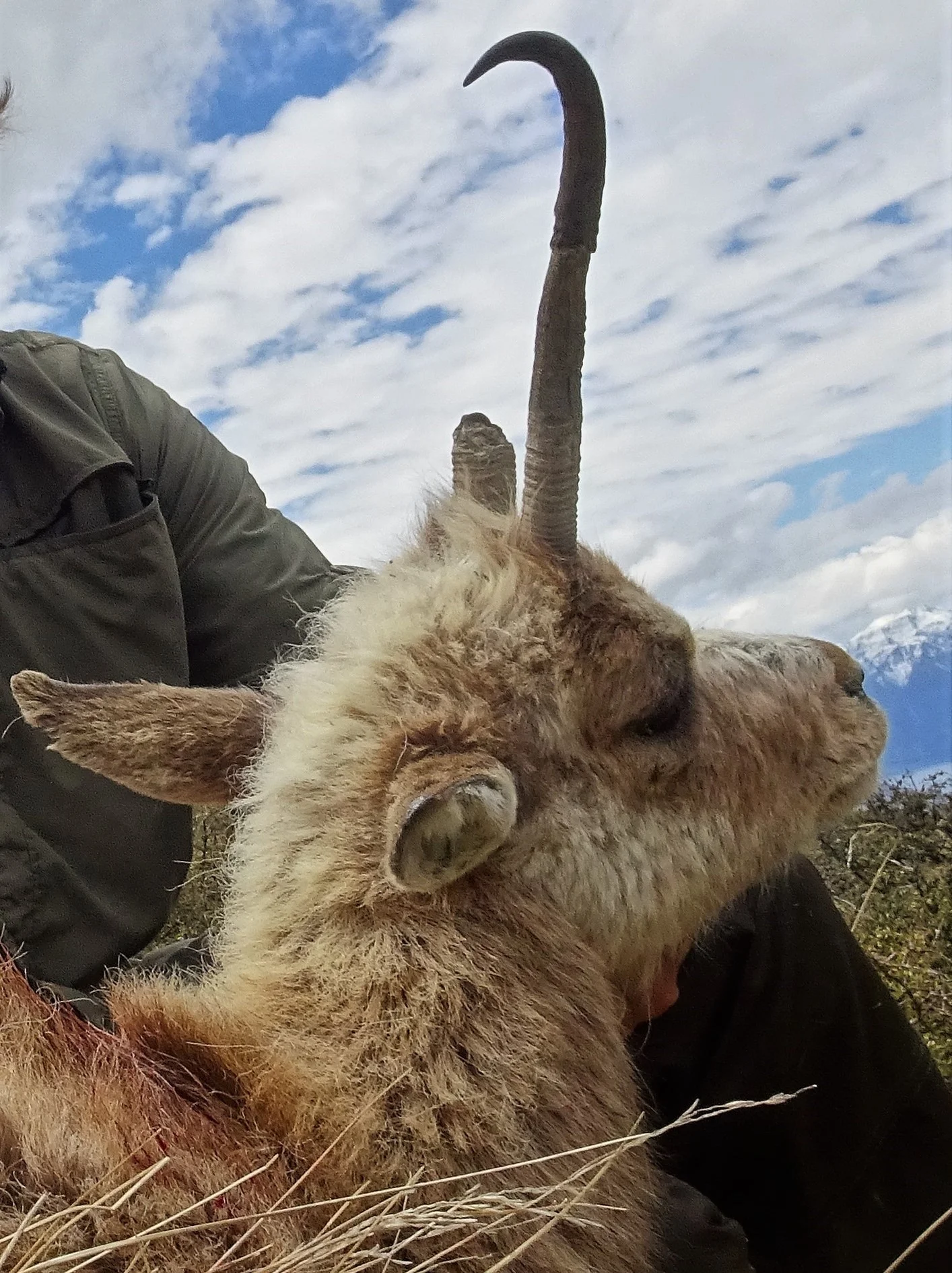 This is an absolute dinosaur of an old chamois doe, quite the character trophy. image @PointsSouth
This is an absolute dinosaur of an old chamois doe, quite the character trophy. image @PointsSouth
Another reason may be that hunters are getting more educated on what they should be shooting and when. There will always be the school of thought that “I only hunt for meat I don’t care what I shoot”. I’m not disagreeing with this, I hunt for meat very regularly but every time I pull the trigger I know exactly what I’m shooting. How many times have you heard about people shooting an animal only to find that when they walk up to it, it wasn’t what they expected? In my view, this should not happen. There’s not really an excuse for shooting a hind that has a fawn at foot or a velvet stag that’s showing great potential.
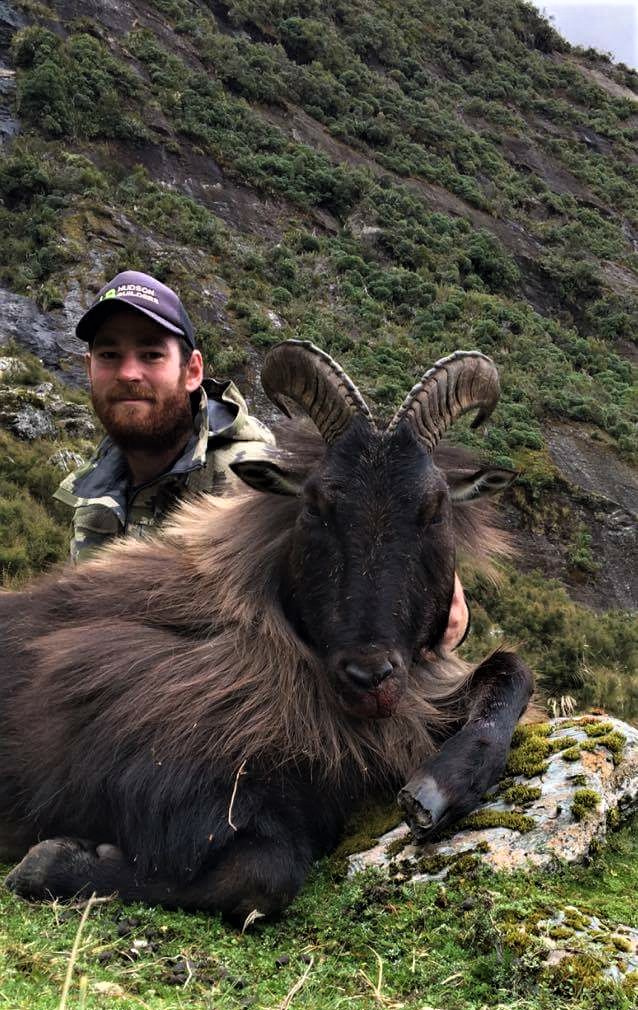
Stacks of age rings on this 14”+ bull tahr taken by Sam Taylor
The media may have helped in this regard with hunter education. The pictures of good animals and by good animals I mean quality trophies may have helped everyone know what they need to look for, and what they should avoid. You will also see a lot of negativity if a person has harvested an animal people believe they should not have. There have been some absolutely brilliant stags, bulls and bucks coming from public land. They are big, heavy and above all else mature. Being able to assess whether an animal is in the correct age class is quite important. To be able to do this, you need to have some knowledge on what to look for and a way to correctly assess them before pulling the trigger (spotting scopes are handy).
Here’s a quick yet certainly not exhaustive summary of what I look for in a few animals, many people will do it differently and will get the same result.
An awesome bull with serious age taken by Hugh Bagley
Assessing Tahr
Tahr are not easy to judge, for example it’s easy to tell a good stag from an average one. But when you’re talking only a couple of inches between a representative and a monster, you really need to know what to look for. To compound the problem in the rut a bulls mane is often covering the tips of its horns. When they are posturing you can barely see them! This is when you need to play the waiting game. Put the spotter on him and watch until you get all the angles of view on those horns to make a proper assessment. Get in close enough and you can count the age rings. For a bull to be mature you are looking for seven years old and over. A 12 3/4" bull. This is an example of smaller bases. He appears possibly bigger when you use the "two square method" so this is why the head-horn length comparison is useful.
A 12 3/4" bull. This is an example of smaller bases. He appears possibly bigger when you use the "two square method" so this is why the head-horn length comparison is useful.  A great 14" bull where you can see how the "two square method" can be used. From the base the horn extends almost twice as far as the width of the base before it begins to taper.
A great 14" bull where you can see how the "two square method" can be used. From the base the horn extends almost twice as far as the width of the base before it begins to taper.
You’ll need both a side view and a front on view. The front on view is going to give you a view of the width and sweep. If the tips don’t look like they sweep in and point back inwards, chances are he’s only going to be an 11”or so. You will also be able to see the condition of the tips and whether they are broomed or broken. Bulls vary in the width of their horns but the wider ones tend to be bigger.
As for the side view, you can again see the condition of the tips as well as the overall length of the horn. One method I use is to take the width across the base and make a square on the horn (see the picture and it will make sense). If you can fit nearly two of those squares on the horn before it starts to curl and taper, it’s likely a good size. A 13 1/4" bull showing horn sweep. You can see how they point back in toward his neck
A 13 1/4" bull showing horn sweep. You can see how they point back in toward his neck
Another method is to compare the overall length of the horn to the overall length of the skull. On a big bull, they will be similar. The bases are another factor. If they look small they probably are. Don’t get caught out by small bases which seem to make the horns seem bigger. This is where the skull length comparison is great. The coat of a bull also helps to determine his age, a mature bull will have a mane (we’re talking winter hunting here) that will appear to reach back ¾ down his body. Long and pronounced dorsal stripes can be a good indicator too. I wouldn’t get too hung up on the colour of manes as an indicator. I’ve seen big bulls that were just completely black but for some people, a bull Tahr coat is the real trophy and there’s nothing wrong with that. In the spring and summer the coat doesn’t get in the way so it’s far easier to do a horn assessment.
 A side view of the same bull. Note the heavy bases and again the mass before the taper begins.
A side view of the same bull. Note the heavy bases and again the mass before the taper begins.  A great comparison of three good bulls. 1 is a 12 3/4", 2 is a 14" and 3 is a 12 1/2". This shows how sweep and mass make all the difference in the overall length.
A great comparison of three good bulls. 1 is a 12 3/4", 2 is a 14" and 3 is a 12 1/2". This shows how sweep and mass make all the difference in the overall length.  A young bull found in a avalanche. He had great lamb tips but you can see how small his bases are. He in only just over 10" but I think he could have grown into something great with those tips!
A young bull found in a avalanche. He had great lamb tips but you can see how small his bases are. He in only just over 10" but I think he could have grown into something great with those tips!  A 6 year old bull showing some sweep but with weak bases
A 6 year old bull showing some sweep but with weak bases  A comparison between two 11 1/2 inch bulls. Bull 1 is has heavy bases but lacks any sweep. Bull 2 is the same one from the previous photo, Although it appears much smaller, the sweep made up length. The "two square method" shows these are small bulls. Both 5 years old.
A comparison between two 11 1/2 inch bulls. Bull 1 is has heavy bases but lacks any sweep. Bull 2 is the same one from the previous photo, Although it appears much smaller, the sweep made up length. The "two square method" shows these are small bulls. Both 5 years old.
If you combine all these factors and they are all there, you’re likely looking at a 13”+ bull. As with stags, you can get character trophy’s. A really old broomed bull with stacked growth rings is nearly as good and maybe more interesting than a really long one (exception being if its old and long!). One of the oldest bulls I have seen was 13 years old but only 11”. The difference to all the other 11” bulls that get shot is that the fella who shot it knew exactly what he had the rifle pointed at. A one horned bull is another example. I’ve seen a few of these and my guess is because they have taken a fall at some time in their life. Don't get caught out by the skinny bases!
Don't get caught out by the skinny bases!  Stacked up age rings but not huge length, A real trophy. Credit Joseph Peter @ HardYards Hunting
Stacked up age rings but not huge length, A real trophy. Credit Joseph Peter @ HardYards Hunting  Dream bull taken by Alistair Scott and Corry Walker, and below it’s scorecard
Dream bull taken by Alistair Scott and Corry Walker, and below it’s scorecard 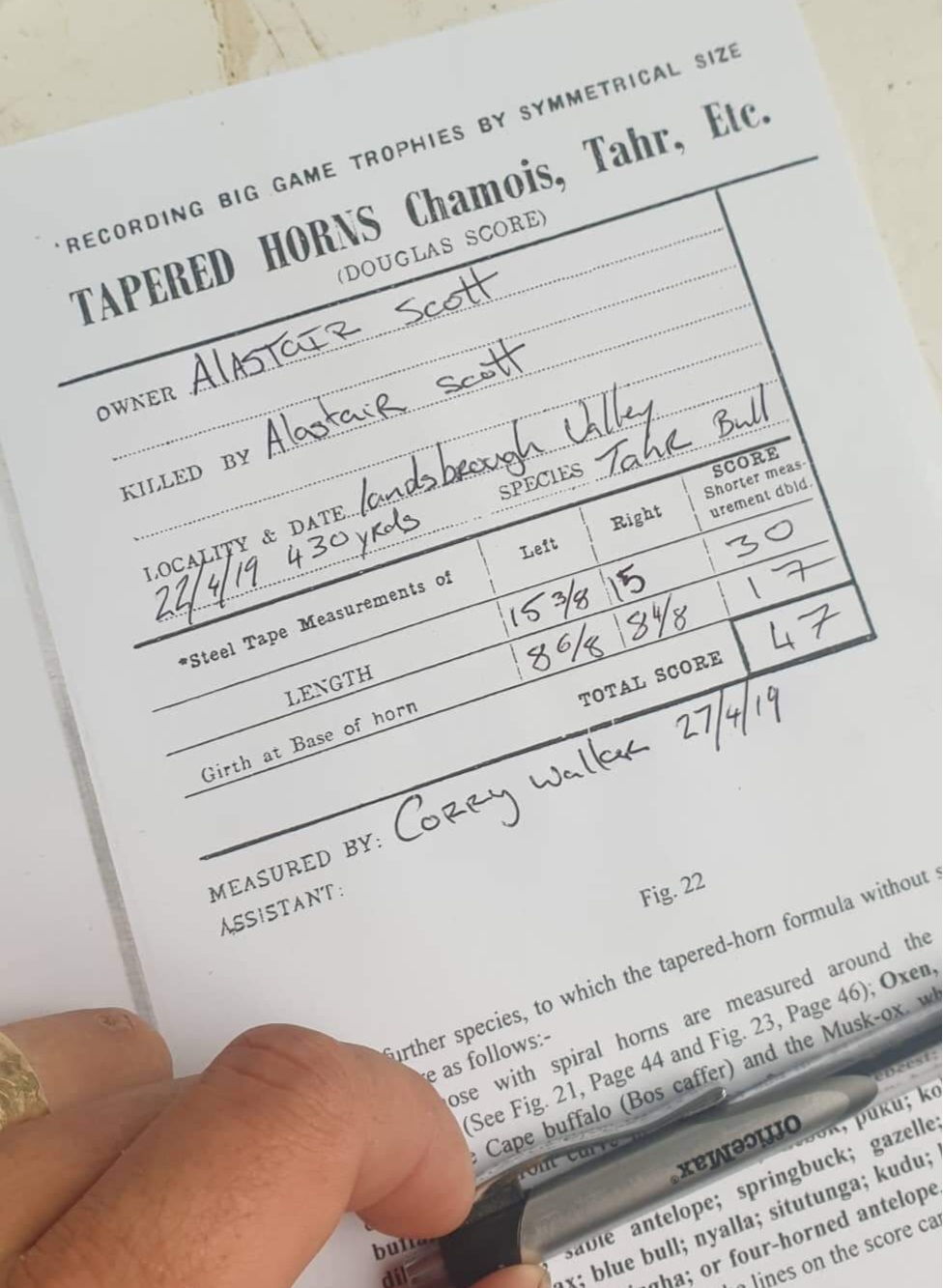

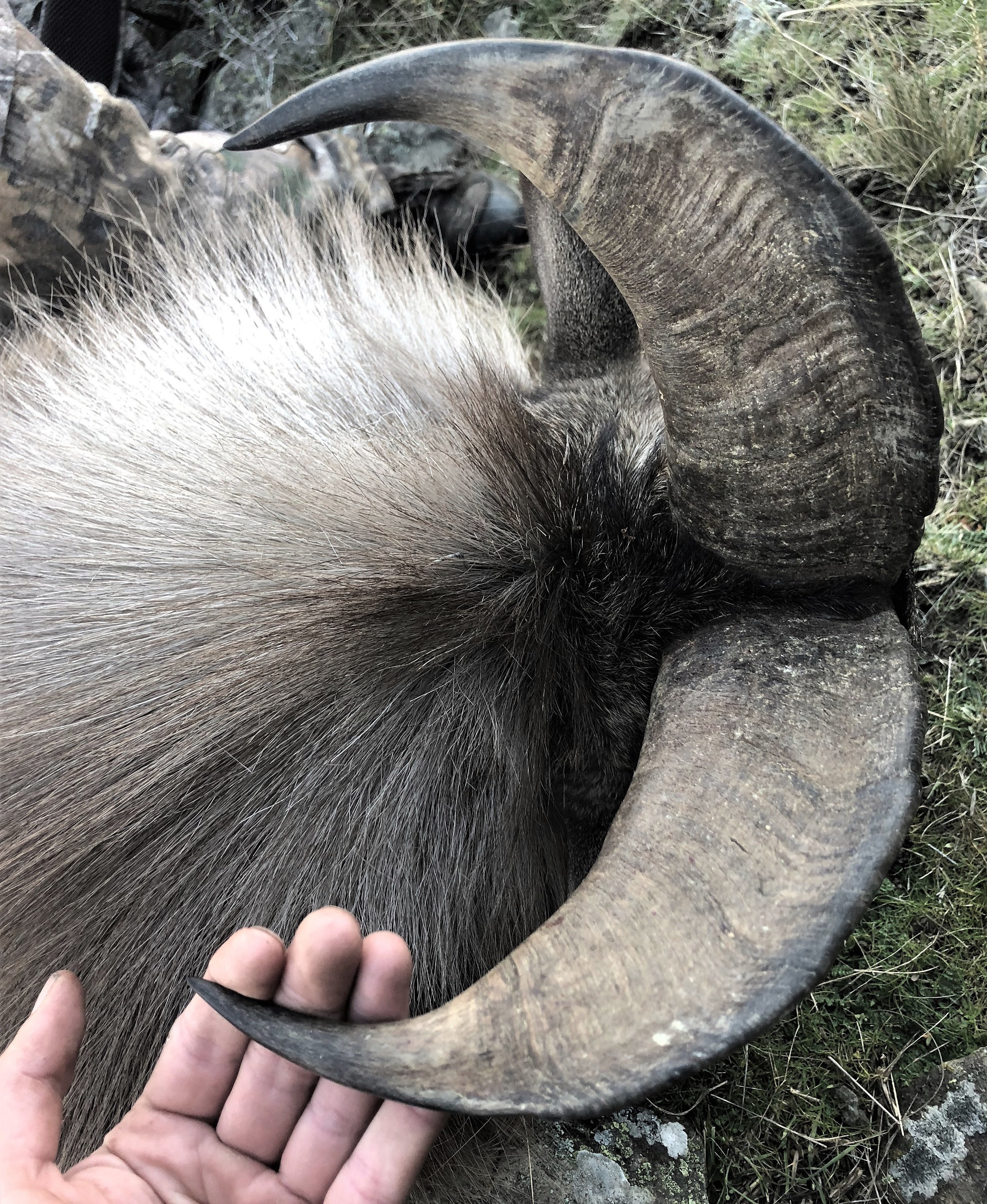

Marcel Powell with a truly mature old bull
Then there’s Chamois
The first thing to figure out is how to tell the difference between a buck and a doe. Without looking at the horns, the body will be a pretty good indicator if it is a mature buck. As with Stag and Bulls, they are just heavier in the front end. A doe’s horns may be high, but they will always appear skinny and have a far less pronounced hook. The ability to tell what a skinny or fat chamois horn looks like may just come from looking at a few. After that it should become pretty obvious. Chamois horns come in all shapes so can be tricky to judge.
Again make sure to spend the time looking at him to get the different angles. My method is quite basic, but it works. There are usually three factors, the bases, length and hook. If a bucks horns appear twice as high as his ears when the ears are upright, sit tight and keep watching.
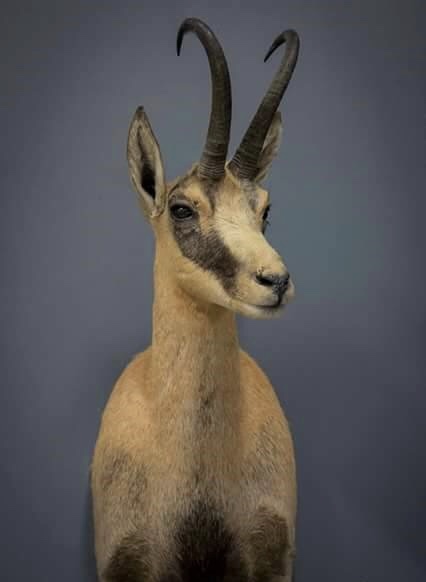
Awesome example of a 10”+ buck, taken by Ewan Black and mounted by Mountain Edge Taxidermy
The hooks on a buck are often where they pick up a lot of their length. A wide, deep hook is what you are looking for. The hook should come back down about a third of the height. But there are always exceptions. Some of the bigger bucks I have seen initially you wouldn’t think are that big. They don’t have much height to them but instead have a massive hook that comes back down over half the height. Again you need to take into consideration the body size in your assessment. Think again of the lanky teenager that’s no quite filled out yet. I had a disappointing experience of taking a younger animal which exhibited all the traits horn wise of an excellent buck. What I failed to do was assess his body size and ended up with a younger animal that likely would have gone on to be an absolute monster.
 Two good chamois bucks. 1 is a 9 1/2" and 2 is a 10". Note that the hook appears to come down about a third of the overall height.
Two good chamois bucks. 1 is a 9 1/2" and 2 is a 10". Note that the hook appears to come down about a third of the overall height.  Buck 1 is a 10 1/2 character trophy with one horn. He has a small hook but massive height compared with the 10" buck beside him.
Buck 1 is a 10 1/2 character trophy with one horn. He has a small hook but massive height compared with the 10" buck beside him.  A buck I misjudged as an older animal due to the dimensions of his horns. He is only 8". Note how large his eye socket appears. I think he could have been a monster.
A buck I misjudged as an older animal due to the dimensions of his horns. He is only 8". Note how large his eye socket appears. I think he could have been a monster.  The comparison between a buck and a doe. Note the lack of mas and hook on the doe.
The comparison between a buck and a doe. Note the lack of mas and hook on the doe.
Once again there’s the odd character trophy to think about, with chamois these usually are the one horned bucks. They may have lost it either to a fall, or more likely (at least on the coast) horn rot. I have one on the shelf that goes 10 ½” but only has one horn. Interestingly he is very high with a small hook.

Joseph Peters recent chamois buck, well in excess of 10 inches.
Let’s talk about red stags, ever heard of ground shrinkage?
The author with a mature stag showing solid timber, length and tines. The pedicles appear low and more toward the side of the head. Note the left antler lacks length in the bez and the rear royal, possibly from an injury.
A close up of the same stag showing pedicle height and size
Stags can suffer from this terribly if you haven’t carried out a proper assessment. Granted there isn’t always time to do this in a bush hunting situation but at least try to. You will be pretty disappointed when you walk over and find a scrubby little 8 on the ground and you were thinking it’s a monster.
The factors you want to consider are the tine strength, number of tines, overall length and width, main beam girth and the age. A mature stag’s pedicles will be low and further out to the side of the skull, leaving a flat area on the top of skull. To be a great trophy, you want strong brow, bez and trez tines followed up by three (or more) royals and thick main beams. The body can give you a few clues too. A more mature stag will have a more pronounced gut as well as a thicker neck. Their nose will appear wider and in general the face looks older (sounds silly but its true). A younger animal will be like a teenager; a bit lanky and not really filled out properly.
An old stag. The pedicles on this stag are the lowest I have ever seen. You can see the flat area on top of the skull.  The same stag as a euro where you can see how low and wide the pedicles appear even with no skin.
The same stag as a euro where you can see how low and wide the pedicles appear even with no skin. A close up to compare to the above close up of pedicle height
A close up to compare to the above close up of pedicle height
If you find a Stag exhibiting all the traits of a mature animal but the antlers are still poor, chances are they never will be great and it’s a good animal to harvest (cull). A stags peak antler growth will be at about 7-8 years old and after that, the quality of antlers will usually diminish. Let’s be honest, for a red you really want 12 points or more but in saying that, I’ve seen some massive ( 40”) 8’s and 10’s that were never going to get any better so I would have been happy to shoot them. Length wise the dream is to hit that magical 40” mark. I still don’t know the best way to tell exactly how long a stag is but if he can easily scratch his bum with his antlers, they’re quite big!
 A bush stag shot in the roar when time to evaluate is limited. The decision to take him was made by firstly seeing his royals, then finally when he came into the open. He is a younger stag which showed reasonable length but lacked any bez tines.
A bush stag shot in the roar when time to evaluate is limited. The decision to take him was made by firstly seeing his royals, then finally when he came into the open. He is a younger stag which showed reasonable length but lacked any bez tines.  Another close up comparison of a young cull stag that was lacking quality. He was in an area with high numbers where reduction in poor quality animals was required.
Another close up comparison of a young cull stag that was lacking quality. He was in an area with high numbers where reduction in poor quality animals was required.

Ewan Black with the results of barely pulling the trigger for 20 years, 40 inches of true Otago genetics from public land. This is the absolute dream and what we should be seeing more of if we look after our resource. Another cracking mount by Mountain Edge Taxidermy.
There’s also character trophy’s and cull stags (as mentioned earlier) to consider. A cull stag is going to be one that will never be considered a great stag and has traits that may not be considered desirable such as missing or weak tines, narrow width or small timber. Don’t get caught out by looking at a young stag which may appear to have some of these defective traits, but really he is just young so hasn’t fully developed.
As for character trophy’s, they can come in all sorts of forms and it’s usually up to the person pulling the trigger. Again they are probably never going to be a great stag but they have traits that just make them interesting. I’ve seen heads with split beams, drop tines, multiple pedicles, bent beams you name it, it can happen. It can be genetics or damage done during early stages of velvet. These heads can make a great talking point and always draw attention.
Those are the things I’m looking for when I’m after a trophy animal (for these three species anyway). It’s fair to say that after a while looking at any of these animals the old saying “you’ll know a big one when you see it” definitely applies. It is however important to remember that a trophy means different things to different people.
The hunting resource that we have in New Zealand is pretty fantastic. There’s always people bagging the way our game animals are managed and to be honest, you could say many of them have suffered miss management. It’s easy to blame government agencies here and rightly so, but also some hunters are to blame too. The old “kiwi bomb up” often raises its ugly head. Everything gets shot, who cares what it is.
I recall a group of Tahr hunters I spoke to not so long ago. When I asked how they got on the response was “Na no good, didn’t see any good bulls.” I then asked if they shot anything. “Yea we shot 8 Bulls but nothing over 11 inches.” To say I was stunned was a bit of an understatement. How could you possibly expect to ever see a good bull if you are going to shoot all the immature ones? Time and time again it’s the same with hunts in the roar. Someone shoots a young six or an eight then complains they didn’t see a big one. They just won’t ever get big if you shoot them when they are immature! Things may change in terms of hunting and animal management in the near future so I look forward to seeing what happens. Getting into that topic is a whole other kettle of fish!
As hunters we all share a passion for the game we hunt. While we may have differing views, we all want a sustainable herd that allows us to go out and harvest what we are after whether that is a monster stag or a fat little yearling. If we all understand what others are after we can make sure we continue to see 40” stags, 14” bulls, 10” bucks and at the same time have freezers full of high quality meat. I recall a slogan of sorts from Cam Speedy “Let him grow, take the doe”. I think his game management presentation for the Sika Foundation is fantastic, it's also applicable to all out big game species. It talks about a variety of topics including how to manage animals in order to achieve specific herd characteristics and age classes, please check it out below.
That’s my 10 cents for now. I’m always keen to hear from people on how they go about assessing animals and anything about hunting in general so drop me a line if you want. In the meantime stay safe and hunt hard, just remember to assess your animal and let’s keep seeing those fantastic trophy photos!






